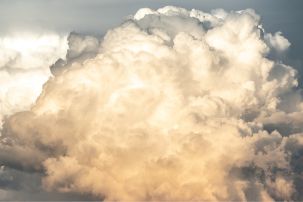Lesson summary
In this activity students explore the existence of environmental art throughout history. Students look at and analyse examples of landscape art, land art and eco art. They are then asked to create their own work of environmental art by recreating a historical work of art or by imagining an artist’s response to climate change.
Learning intentions:
Students will...
- understand that environmental art has existed in many forms throughout history
- critically analyse the intentions of a range of environmental artists
- recognise a range of visual intentions used by environmental artists.
Lesson guides and printables
Lesson details
Curriculum mapping
Australian Curriculum content description:
Years 9 & 10 Visual Arts:
- Conceptualise and develop representations of themes, concepts or subject matter to experiment with their developing personal style, reflecting on the styles of artists, including Aboriginal and Torres Strait Islander artists (ACAVAM125)
- Manipulate materials, techniques, technologies and processes to develop and represent their own artistic intentions (ACAVAM126)
- Plan and design artworks that represent artistic intention (ACAVAM128)
- Evaluate how representations communicate artistic intentions in artworks they make and view to inform their future art making (ACAVAR130)
- Analyse a range of visual artworks from contemporary and past times to explore differing viewpoints and enrich their visual art-making, starting with Australian artworks, including those of Aboriginal and Torres Strait Islander Peoples, and consider international artworks (ACAVAR131)
Year 10 History:
- The background to environmental awareness, including the nineteenth century National Parks movement in America and Australia (ACDSEH028)
- The growth and influence of the environment movement within Australia and overseas, and developments in ideas about the environment (notion of ‘Gaia’, ‘limits to growth’, concept of ‘sustainability’, concept of ‘rights of nature’) (ACDSEH126)
Syllabus Outcomes: VAS5.1, VAS5.3, VAS5.4, VAS5.5, VAS5.6, VAS5.7, VAS5.10, HT5-1, HT5-3, HT5-4.
General capabilities: Critical and creative thinking, Ethical understanding.
Time required: 2 x 48 mins
Level of teacher scaffolding: Medium – oversee activity and facilitate discussion.
Resources required
- Internet access
- Student worksheet
- Art materials
Additional info
Artists used in this resource:
- Bernard Pras – Re-creation of Under the wave off Kanagawa by Katsushika Hokusai
- Chris Jordan – Re-creation of A Sunday on La Grande Jatte by Georges Seurat
- John Constable – Cloud study
- Robert Smithson – Spiral Jetty
- Andy Goldsworthy – Rowan leaves and hole
- Nele Azevedo – Melting men
- Henrique Oliveira – baitogogo


Welcome back!
Don't have an account yet?
Log in with:
By signing up to Cool.org you consent and agree to Cool's privacy policy to
store, manage and process your personal information. To read more, please see
our privacy policy here(Opens in new tab).
Create your free Cool.org account.
Many of our resources are free, with an option to upgrade to Cool+ for premium content.
Already have an account?
Sign up with:
By signing up to Cool.org you consent and agree to Cool's privacy policy to
store, manage and process your personal information. To read more, please see
our privacy policy here(Opens in new tab).